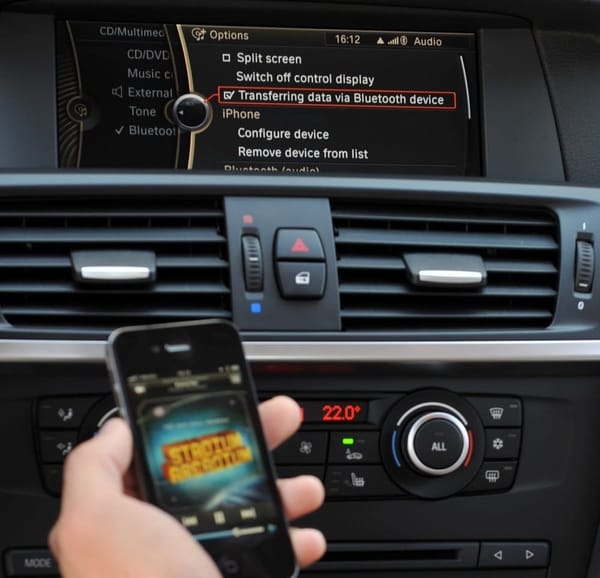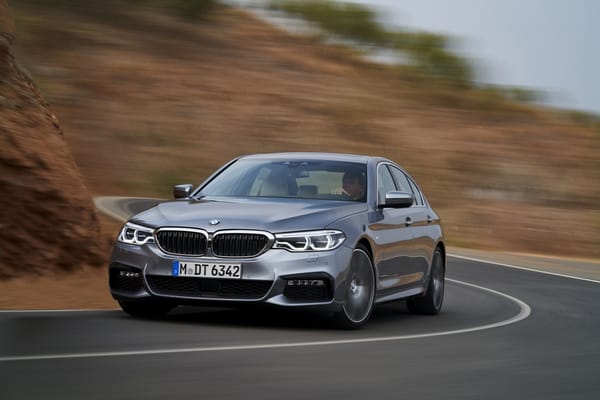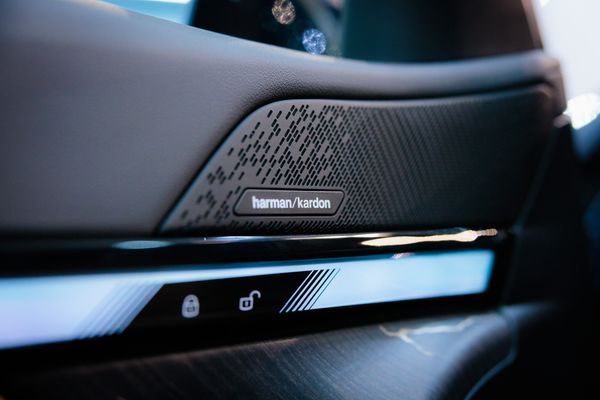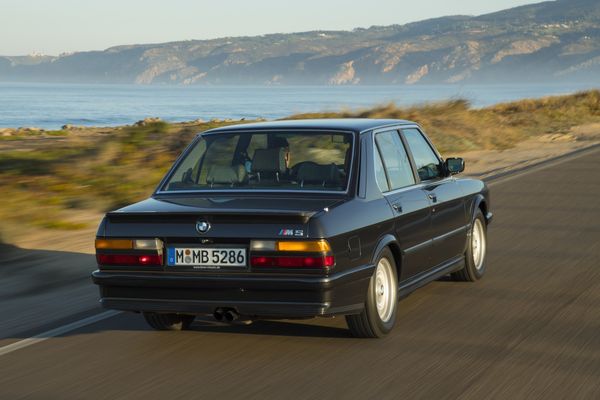Owners' Troubles: The BMW Footwell Module (FRM) Saga
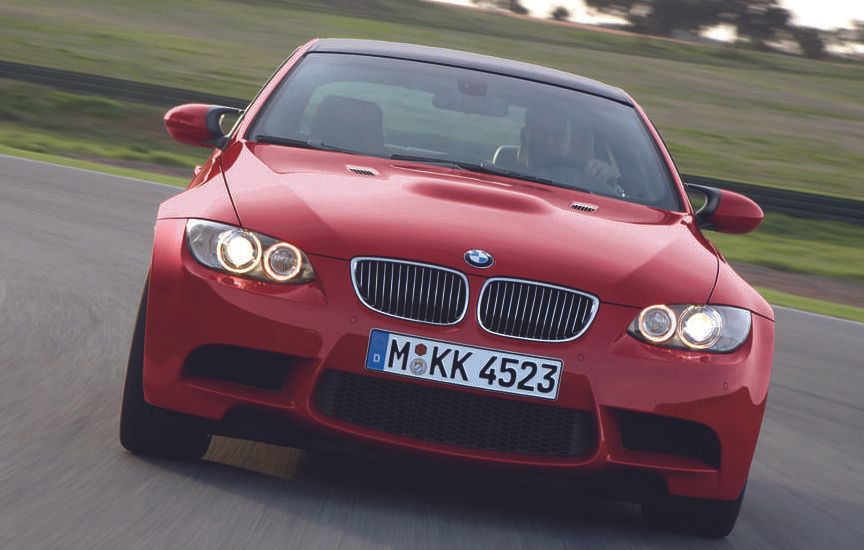
Have you ever heard of the Footwell Module? Well, in Germany, they call it the Fußraummodul. But for us BMW owners, it's perhaps the most notorious control module ever.
Picture this: you're simply replacing your battery or trying to read a fault with a scanner, and BAM! Your FRM decides it's had enough.
When Bluetooth Revealed More Than Just Connectivity Issues
It was a crisp autumn morning when a Melbourne Red E90 LCI pulled into the shop, its sleek body reflecting the golden hues of the season.
The owner, a tall gentleman with a hint of frustration in his eyes, came in with a seemingly straightforward request: "I've got Bluetooth connectivity issues."
Little did we know, this E90 was about to introduce us to the notorious world of the Footwell Module.
Eager to diagnose the issue, I connected the ICOM for a comprehensive vehicle test using ISTA. As the system began reading the car's modules, a sudden chill ran down my spine.
The iDrive screen flashed with a dreaded message: "Lighting system malfunction." My heart sank. Before the diagnostic had even completed, I knew exactly what had transpired.
That all-too-familiar Footwell Module had struck again, revealing its fickle nature in the most inconvenient of moments.
NOT AGAIN!!!
The E90's moody Footwell Module decided to steal the spotlight, reminding us once again of its unpredictable nature.
Have you ever heard of the FRM? For many, it's a source of countless headaches. But for us, it was about to become an adventure, uncovering the quirks and tantrums of perhaps the most infamous control module in the BMW world.
BMW did try to save face by extending the warranty on this mischievous module from 2 to 8 years, but it's still a thorn in the side of many BMW enthusiasts.
The Culprits
So, what exactly makes the FRM throw its tantrums? Here's the list:
- Battery replacements
- Jumpstarting
- Coding or programming
- Fault memory scans
- And sometimes, just giving it the side-eye!
BMW claims it's a "compatibility issue", but after years of dealing with this module, I can confidently say: it's just moody!
In any tale of vehicular woes, the carmaker's official word is often the most sought-after piece of the puzzle. It sheds light on the manufacturer's perspective and provides guidance on how they're addressing the issue. So, what does BMW have to say about the FRM troubles plaguing numerous models?
In Their Own Words: BMW's Official Stance on the FRM Conundrum
BMW North America's issuance of Service Bulletin SI B01 20 16 speaks volumes about the company's acknowledgment of the FRM challenges. This bulletin is a testament to BMW's commitment to ensuring customer satisfaction and vehicle reliability.
The Affected Models: The bulletin provides a comprehensive list of models produced between 2009 and 2014. It's a vast range, but a vital caveat exists: not every vehicle within these model ranges is necessarily affected. BMW has a specific "Vehicle Comment" system in place to flag eligible vehicles.
Root of the Issue: BMW pinpoints the problem to a compatibility hiccup between the vehicle's software (Plant Integration I-Level) and the FRM hardware. When technicians use the ISTA/D tool for diagnostics or software updates, this incompatibility might rear its head, causing the FRM to fail.
BMW's Resolution Path: For vehicles exhibiting the FRM malfunction, BMW's directive is crystal clear - replace the failed module. They've even provided a specific repair instruction for this - 61 35 616.
A Generous Gesture - Extended Warranty: BMW NA's decision to extend the FRM's warranty to 8 years or 125,000 miles at the time showcases their dedication to upholding the brand's reputation.
But remember, this wasn't a recall. It was a warranty extension, meaning there's no immediate need for action unless your BMW is currently experiencing the problem.
However, all E-Series BMWs are now older than 8 years.
Understanding the FRM and Its Role
What exactly is this FRM, and why is it so pivotal in the BMW driving experience?
The FRM isn't just a fancy name; it's the control center for a plethora of essential functions that collectively enhance your BMW's functionality and user experience.
The Basics of FRM
- Location: The FRM finds its home in the driver-side footwell, becoming a hub of electrical activity (both LHD and RHD vehicles).
- Functionality: Primarily, the FRM is the brain behind your BMW's lighting system and windows. Whether it's the radiant glow of headlights or the swift motion of power windows, the FRM is at the helm.
- Communication: The FRM isn't a silent worker. It's in constant dialogue with various parts of the car, receiving door signals, and interacting with the instrument cluster. It also plays a pivotal role in adaptive headlight control.
Components and Signals: The FRM's Extensive Network
The FRM isn't a standalone entity; it's interconnected with various sensors and signals to ensure seamless operation:
- Sensors:
- Height sensors gauge the car's altitude, playing a crucial role, especially in adaptive lighting.
- Switches like the reversing light switch, brake light switch, and hazard warning flasher switch.
- The light switch controls the illumination intensity.
- The driver’s door switch block and door contacts in both front and rear doors.
- The driver’s door lock ensures security synchronization with the FRM.
The Master Controller
The FRM isn't just a passive receiver; it's an active controller of numerous components:
Visibility and Illumination:
- Headlights, tail lights, and fog lights ensure you see and are seen on the road.
- Ambient lighting sets the mood inside the cabin.
- License plate lights and auxiliary turn indicator lights enhance the car's visibility.
Comfort and Convenience:
- Power windows and exterior mirrors adjust at the touch of a button.
- Front and rear courtesy lighting welcomes you every time you enter the vehicle.
Advanced Controls:
- Controllers for the adaptive headlight stepper motors adjust the light beam based on various conditions.
- Safety belt feeder controllers, a feature exclusive to the E92 model, ensure your seatbelt is always within reach.
In essence, the FRM is the unsung hero, silently and efficiently managing multiple operations in your BMW.
Why do FRM Modules Fail At Such a High Rate?
One of the most perplexing questions many BMW owners and technicians grapple with is: Why do FRM modules, central to so many functionalities, fail at such an alarming rate?
Here's my take.
The Anatomy of an FRM Failure
The Underlying Issue: Corrupt EEPROM Data
At the heart of most FRM failures lies a corrupted EEPROM data. My theory is that this corruption might occur long before the visible failure of the FRM.
Astonishingly, the FRM continues its operations unhindered despite this corruption. That is, until it's forced to reboot.
The Catalysts for a Shutdown
FRM modules exhibit their vulnerabilities, particularly during certain conditions:
- Disconnecting and reconnecting a battery can be a death knell for an already compromised FRM.
- Jumpstarting a car with a drained battery can also precipitate the FRM's failure.
- Even running diagnostics with a scanner, a seemingly benign operation, can be the straw that breaks the camel's back.
Essentially, the data required for the FRM’s regular operations remain untouched. The Achilles' heel? The boot-up files crucial for initiating the module.
Debunking Myths: The Role of ISTA Programs
There's a popular notion floating around: hacked ISTA programs are the culprits behind FRM failures. I'd like to debunk this myth.
Many FRMs I've seen meet their untimely demise were under the watch of the official BMW dealer ISTA setup.
The Tricky Conversation with the Customer
Imagine the daunting task of breaking the news to a customer who simply brought in their BMW or MINI for a routine check or battery replacement.
Their beloved vehicle, instead of getting a clean bill of health, now has a failed FRM. The challenge isn't just technical; it's also about managing expectations and trust.
And while our knowledge and experience with this issue have evolved over a decade, the conversations today are only marginally smoother.
Turning Adversity into Opportunity
Frustrated by the recurring issue and driven by a desire to offer better solutions, I embarked on a journey to master FRM repairs.
This wasn't just about fixing a module; it was about easing the pain points of every individual involved in the process.
Plus, my growing collection of malfunctioned FRMs provided the perfect training ground. There's a silver lining to every cloud, after all.
The key is in understanding the root cause, addressing it with expertise, and turning every challenge into an opportunity for growth and betterment.
Resurrecting the Guardian: A Guide to Repairing Bricked FRMs
With the right skills and tools, a bricked FRM isn't the end of the road.
The Journey to Unbricking
From Piles of Failures to Pioneering Fixes
Over the years, my workshop had started to resemble an FRM graveyard, each module a testament to the challenge at hand. But then, as with many problems, solutions began to emerge. And the best part? These solutions didn't involve swapping out parts. The internet, especially the forums, became a goldmine of information.
The Direct Approach: Reflashing the EEPROM
While a software update often promises salvation for a bricked FRM, the challenge is that the compromised FRM loses its communication capabilities with the vehicle's network. The solution? Dive deeper. Reflashing the EEPROM directly via the circuit board on the bench is the key.
Navigating this process was a roller-coaster. Months went by without success, but persistence paid off. It's worth noting that this was during the early days when YouTube wasn't brimming with "How to repair FRM" tutorials.
DIY Enthusiasts: A Step-by-Step Guide
For those brave souls looking to take matters into their own hands, here's a comprehensive guide:
To assist you further, this tool will prove invaluable: FRM Repair Tool
However, a word of caution: If EEPROM flashing and electronics sound like a foreign language, it's best to delegate this task. Numerous specialized companies have mastered this art and can ensure a seamless repair.
Weighing Your Options: Repair vs. Replacement
When faced with a bricked FRM, you essentially have two routes: repair or replace. While getting a brand-new FRM is an option, repairing your existing one is often more economical and efficient. Most specialized firms will typically charge between $100 to $200 for the service.
One added complexity is the myriad of FRM versions out there. If you're considering sourcing a used FRM, be prepared for a potential maze.
In conclusion, while a bricked FRM can be a source of distress, it's far from a death sentence for your BMW. With the right tools, expertise, and patience, your vehicle's guardian can be brought back to life, ready to serve and protect once more.
Decoding the FRM: Navigating Versions and Compatibility
The Footwell Module (FRM) is much like the brain behind a vehicle's lighting system. But as with all brains, there are variations, and when it comes to replacing the FRM, these variations matter.
A mismatched FRM could at best lead to minor inconveniences, and at worst, major malfunctions.
FRM Versions for the E90 3 Series:
Based on Lighting Systems:
Halogen Headlights:
- FRM2 E90 E91 LOW (without fog lights)
- FRM2 E90 E91 NSW (with or without fog lights)
- FRM2 E87 E9X XE
- FRM2 E87 E9X LED XE
- FRM3 MAX BROSE
Xenon Headlights:
- FRM2 E87 E9X XE
- FRM2 E87 E9X LED XE
- FRM3 E87 E92 E93 XE
- FRM3 E87 E9X LED XE
- FRM3 MAX BROSE
AHL (Adaptive Xenon) Headlights:
- FRM2 E87 E9X AHL
- FRM2 E87 E9X LED AHL
- FRM3 MAX BROSE
The Versatile FRM3 MAX BROSE:
The FRM3 MAX BROSE is the Swiss Army knife of FRMs for the E90 3 Series. Whether your car sports halogen, xenon, or adaptive xenon headlights, the MAX BROSE can be tailored to fit the bill. If you're sourcing a new FRM for your E90, this version is what you'll typically receive. It's designed to be adaptable and can be coded to mesh seamlessly with any E90 lighting setup.
Matching Model Series is Crucial:
While lighting setups play a vital role, it's equally crucial to match the model series. An FRM designed for an E90 won't gel with an E84 X1. Similarly, the E70 X5's FRM will clash with the E90's system. A nuanced example is the E87 5-door 1 Series version (except the MAX BROSE). While it might fit into an E82 1 Series Coupe, you'll notice anomalies like the door window not lowering during door operations.
While sourcing an FRM might seem straightforward, the devil is in the details.
Ensuring the right version for your vehicle's specific needs is essential.
Diving Into the Details: Replacing the Footwell Module (FRM)
There's a certain allure to the world of DIY automotive repairs, especially when armed with the right knowledge and tools.
While I might make swapping out the FRM sound like a walk in the park, it’s worth noting that the ease comes with experience. Here's a step-by-step guide for those of you willing to get your hands dirty.
Location, Location, Location:
The Footwell Module (FRM) is consistently located in the driver’s footwell across all BMW models, irrespective of whether they're right-hand drive (RHD) or left-hand drive (LHD).
It's anchored to the body sidewall using two plastic 10mm nuts.

Safety First, Always
While the knee-jerk reaction before diving into any electrical job is to disconnect the battery, I'll let you in on a secret: I usually skip this step when removing the FRM.
Although it's the general rule of thumb to disconnect the battery when tampering with any control module (ECU), I find it unnecessary for the FRM.
You might wonder, why? Well, while disconnecting the connectors out of sequence might trigger fault memory entries, these are superficial and can be erased later. They don’t interfere with the functionality.
Plus, if you're replacing the FRM, it's likely dead to begin with.
The Nuts and Bolts of It
Accessing the FRM requires removing two nuts. The lower nut is a straightforward affair, but the upper one is a tad trickier. You'll need to navigate through a maze of wiring to get to it.
Over the years, I've found a trusty ¼ ratchet setup to be the perfect tool for the job. A little pro-tip: you don't need to unscrew the nut entirely.
The module holder is designed with a cutout, allowing you to just slide the FRM down once the nut is loosened.
A Visual Guide:
For those who prefer visual aids, here's an excellent guide by BMW Fanatic focused on the E90:
The world of DIY auto repairs can be daunting, but with patience and the right tools, it's an achievable feat. Just remember to take your time, follow the guide, and soon enough, you'll be swapping out FRMs like a pro.
Taking the Mystery Out of Encoding: Configuring Your Footwell Module (FRM)
One of the most crucial steps after swapping out your FRM is ensuring that it plays well with the rest of your BMW.
This is where encoding comes into play. Think of encoding as giving the FRM its marching orders tailored to your car's specific configuration.
Understanding Encoding
When you slot in a new or used FRM module, it's akin to introducing a new team member at your workplace. Just like the newbie would need a rundown of their responsibilities, the FRM needs to understand its role within your BMW's ecosystem.
This is achieved through encoding.
The Encoding Process
For those who've dabbled in BMW's coding world, using tools like NCS Expert or apps like ProTool will feel second nature. The process is quite straightforward:
- Launch NCS Expert.
- Load your vehicle profile.
- Read the Vehicle Order.
- Select the FRM module and code it.
With NCS Expert, you'd be done in a jiffy. However, if this all sounds like Greek to you, fret not. There's a comprehensive guide on E Series coding that you can refer to. (!!Under Construction!!)
Alternatives for the Uninitiated
If diving deep into the coding rabbit hole isn't for you, a trip to the shop might be in order.
BMW dealerships will happily encode your FRM for a fee, which, funnily enough, might mirror the cost of a repair that doesn't involve any coding.
There's also the option of turning to BMW coders who offer remote coding services.
This could be a convenient middle ground between doing it yourself and heading to a dealership.
Striking Gold: A Perfect Match
It's akin to finding a needle in a haystack, but sometimes, the stars align. On the rarest of occasions, you might procure an FRM that hails from a BMW twin to yours, option-for-option.
In such serendipitous situations, the FRM would slide into your BMW and function without a hitch, no encoding required.
If you've got the VIN of the donor car, you can cross-check its vehicle order with yours. This can be done using the following tool:
Whether you decide to dive in headfirst or delegate the task to the pros, ensuring your FRM understands its role in your BMW is paramount.
The Footwell Module Saga: Lessons Learned and Roads Ahead
The world of automobiles is fraught with intricacies, and the Footwell Module (FRM) dilemma is but one of the many mysteries of the BMW ownership experience.
Like many intricate systems, the FRM has its fair share of quirks that make it both a marvel and a potential headache.
Perspective on Failures: The unpredictable nature of FRM reliability can be disconcerting. It's akin to walking on a tightrope, never truly knowing when the next misstep could come.
But to label all FRM modules as time bombs waiting to implode would be a gross overstatement. For every FRM horror story, there are countless tales of BMWs cruising along without a hitch.
The hiccup, however, lies in the fact that when they do fail, it's often more frequent than one would expect from such a renowned automaker.
Personal Encounters: My singular brush with FRM adversity was less a tale of software malfunctions and more a testament to human error.
A windscreen replacement gone awry led to water ingress, culminating in the module's untimely demise.
While I opted for a brand-new module at the time, my subsequent trysts with FRM repairs have since illuminated the viability of repairs over replacements.
The Case for Repairs: Having dabbled in the installation of a plethora of new, used, and refurbished FRMs, I've come to champion the cause of repairs.
Barring instances of water damage, a repaired FRM can rival the efficiency of a brand-new module.
With specialized companies offering swift repair services, often on the same day, the process has become both streamlined and economical. A handful of reliable repair options include:
- Germany: Fussraummodul
- USA: The ECU Pro
- UK: BMW Specialist UK
Weighing the Costs: While the allure of a brand-new module might be tempting, one must consider the associated expenses.
A new module alone can set you back by about $600, with additional costs incurred for installation and encoding.
Opting for a full-service solution from a BMW dealer, although accompanied by the assurance of a 2-year warranty, comes with a hefty price tag of approximately $1,000 or more.


